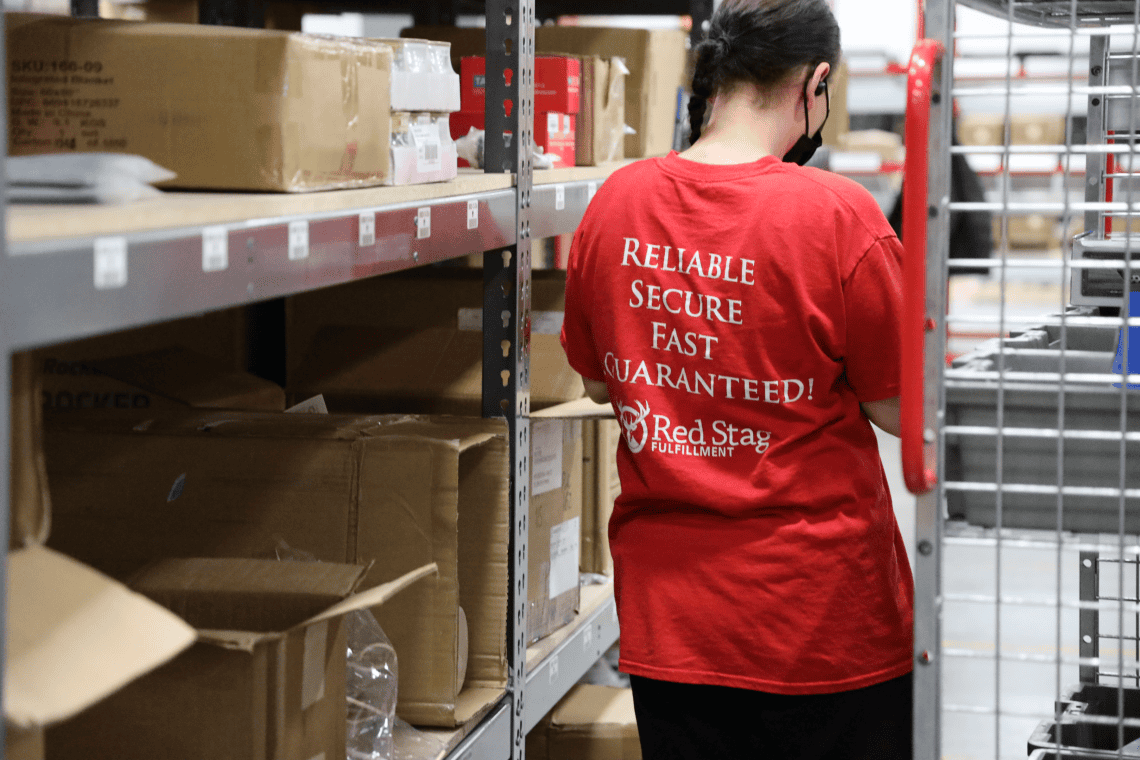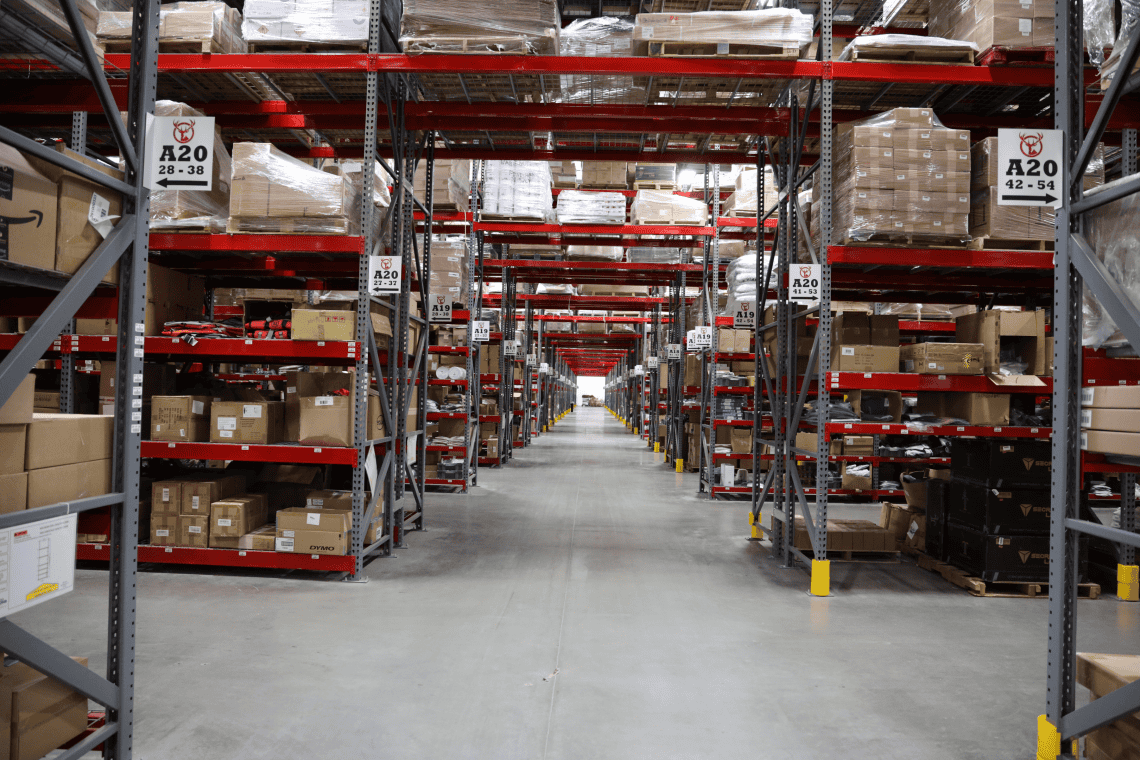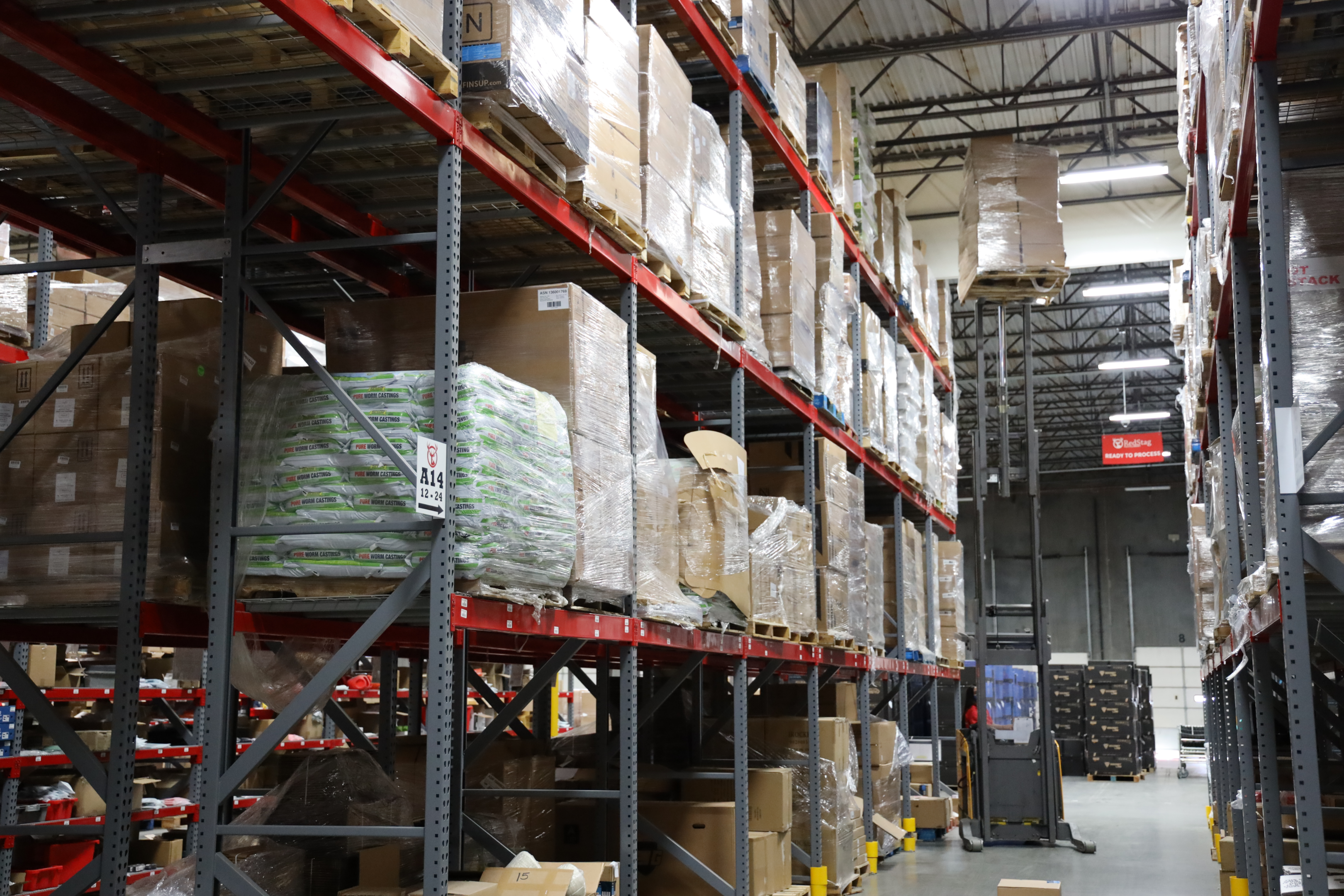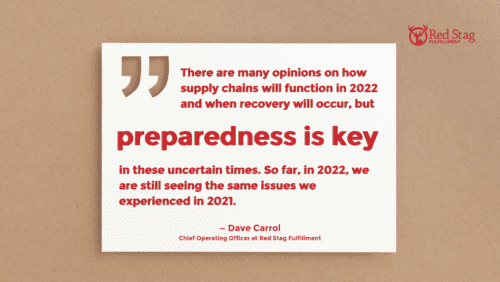Inventory management is critical to your business’s ability to meet customer demand. A perpetual inventory system provides real-time tracking of stock down to the SKU level to streamline your operations and improve efficiency.
Read on to learn how these systems work and why they’re essential for you to stay in stock, manage costs, and maximize profitability.

TL;DR:
Perpetual inventory systems

Perpetual inventory systems provide real-time tracking of inventory across all sales channels and warehouses.

These systems connect with your sales channels and WMS to automatically update inventory as items are received or sold.

Unlike periodic inventory systems that rely on physical counts, perpetual systems offer always-accurate stock data for better decision making.

These systems are essential for omnichannel businesses to maintain accurate stock levels and prevent stockouts.

What is a perpetual inventory system?
01
A perpetual inventory system is an advanced inventory management method of continuously tracking and recording stock levels in real time. As items are received or sold, the perpetual system automatically updates SKU quantities and inventory balance sheets for visibility into multiple facets of your business, including inventory turnover ratios and optimal reorder quantities. At a higher level, these insights also let you manage cost of goods sold (COGS) and cash flow.
What is perpetual inventory?
Perpetual inventory is the accounting method that aligns with your system. When items are sold, sales values are recorded as credits to your inventory balance sheet. This lets you see how sales cover and surpass the cost of goods sold to deliver profit. Your perpetual inventory system provides this accounting automatically.
Key features of perpetual inventory systems
A typical perpetual inventory system includes the following features:

Real-time inventory tracking at the order and SKU levels

Connectivity across barcodes, scanners, points of sale, and warehouse management systems (WMS)

Ledger-style information detailing cost of goods sold, sales by order, SKU, and remaining stock quantities

Notifications and reporting to drive insights, strategy, and decisions

User configurations to customize systems for your unique business needs

Why do I need a perpetual inventory system?
A perpetual inventory system is generally the most effective way to manage inventory and accounting, especially if you use an omnichannel fulfillment strategy where you fulfill orders across sales channels from a unified stock. That’s because the ability to track inventory across multiple locations and sales channels is crucial to controlling cost of goods sold and meeting customer demand.

PRO TIP: Without a real-time system, you’d have to do a physical count of inventory and compare it against sales and accounting documentation – something major retailers did for decades before digitization with “periodic inventory systems.”
For the most part, though, ecommerce requires real-time data. By automating recordkeeping, you’re free to focus on other areas of your business, like cash management and marketability.

How does a perpetual inventory system work?
02
A perpetual inventory system follows your order-to-cash cycle. In the order-to-cash cycle, you place orders with your supplier, receive items at your warehouses, sell items on your website or other channels, and fulfill your orders to close out the cash as profit or reinvestment in growth.
During each stage of order-to-cash, your perpetual inventory system has its own jobs to do. Here’s how it works.
Supply order management
Since your perpetual system is continuously receiving data from your sales channels and warehouse management system (WMS), it can report on inventory levels, sales trends, cost of goods sold, and profit. Some systems can use this data to adjust reorder points for you, signaling when it’s time to replenish stock or automating purchase orders to send to suppliers.
Warehouse receiving
During receiving, warehouse staff scan barcodes on boxes or other containers that hold multiple SKUs. The barcodes contain information about which SKUs are part of the received shipment, which updates your SKU quantities in bulk in your perpetual inventory system.
Point of sale
Sales are recorded when a customer pays at the point of sale (POS) on your website or other channels. Your perpetual inventory system reduces your inventory by the quantity sold, even though the order hasn’t been fulfilled yet. This ensures product availability is accurate on your sales channels so customers aren’t disappointed by stockouts.

Key takeaway: Real-time inventory updates across all sales channels are essential to preventing stockouts and maintaining customer satisfaction in modern ecommerce.
Customer order fulfillment
During fulfillment, warehouse staff scan items to pick and pack for customer orders. This information also updates your perpetual inventory system and financial data at the same time.

What is a periodic inventory system?
03
A periodic inventory system is a separate method of inventory tracking and management. Under this system, inventory and accounting are updated periodically instead of perpetually. A periodic system typically uses physical inventory counts to validate purchase orders, stock value, and sales data.
Once you have a physical inventory count, you can use the information to correct discrepancies at the SKU level and validate profits.
Why do I need a periodic inventory system?
A periodic inventory system is commonly used by smaller businesses with less complex inventory needs, but you could also use it to further validate the automated information in your perpetual inventory system.

NOTE: When a warehouse receives and scans a shipment, the barcode tells the system what and how many SKUs are in each box. But shortages and damages can happen. If they aren’t caught during receiving, your data is inaccurate. Periodic inventory counts can help surface these discrepancies.

Differences between perpetual and periodic inventory systems
04
A perpetual system and a periodic system represent two distinct approaches to inventory management and accounting. The primary distinctions relate to the timing and methods of how you record transactions.

PERPETUAL:

Real-time data updates as items are received or sold

Automated through digital tools and integrations

Provides accurate, up-to-date view of inventory

Integrates seamlessly with business cycles

PERIODIC:

Updates occur at scheduled intervals (weekly, monthly, quarterly)

Relies on physical inventory counts

Data lags behind actual inventory levels

Requires significant manual effort and resource allocation

Other inventory management methods
05
Within your perpetual inventory system, you can choose from various methods to track and value inventory. Most ecommerce companies use first in, first out (FIFO), although some businesses may benefit financially from last in, first out (LIFO). These approaches are called cost flow assumptions because they guide how you track costs against inventory turnover.
First in, first out
FIFO is where the oldest inventory items are sold first. In a warehouse, that means you place new batches of stock behind existing stock or in a completely separate area, so the oldest items are picked and packed first.

FIFO can improve inventory turnover ratios by ensuring products move consistently through your warehouse, which reduces storage costs and helps maintain more reliable profit calculations. During periods of inflation, FIFO can also provide more favorable profit margins if earlier inventory costs were lower.
Last in, first out
Under LIFO, you apply the cost of your most recent purchase orders to the cost of goods sold, while the cost of older inventory remains on the balance sheet as ending inventory. It is essentially a way to expense the purchase price of your most recent inventory, even if you use FIFO for fulfillment.
But why would you do that? With this method, you have to offset advantages now with future sales. The fact is, some companies can justify the complexity in their accounting records because the method can provide tax advantages when inventory costs rise. When your expense account increases, you can reduce taxable revenue. The tactic is best suited to companies with large inventories or volatile pricing.
How to implement FIFO and LIFO
The implementation of FIFO or LIFO approaches would be extremely challenging without real-time inventory management. But you can use either with a perpetual inventory system by assigning costs to each unit sold based on whichever cost flow assumption you choose. When your perpetual system updates your inventory records, it automatically updates your financial records, too.

Inventory valuation methods
06
You may also use certain valuation formulas for inventory management, regardless of your inventory system. These may not be necessary for your business but there are instances where they’re useful, like analyzing the big picture for a full asset account.
Weighted average cost
Weighted average cost (WAC) is an inventory valuation method that calculates the average cost of each individual item. It considers the total cost of goods available for sale and the total number of units available to create a standardized way of measuring performance and profitability.

NOTE: The WAC formula standardizes inventory value across SKUs, but this approach has limitations. Your store likely sells a variety of items with different wholesale prices, logistics requirements, and sale prices. At scale, WAC loses effectiveness during economic volatility when more detailed inventory records would help you find optimization opportunities.
Economic order quantity
Economic order quantity (EOQ) is an inventory management model that determines the optimal quantity of items to order so that you can minimize the total costs of goods. The goal of EOQ is to find the balance between ordering too little, which increases unit costs, and ordering too much, which increases holding costs.
Calculating EOQ requires knowing annual demand values to calculate against ordering cost per order and holding cost per order. The formula is EOQ = √(2 × D × S) / H, where D is demand, S is ordering cost, and H is holding cost.
The problem with this model is that demand fluctuates. So do quantity discounts and lead times. You can use the formula to create a framework for optimal order quantities, but it may not be possible to configure your perpetual inventory system to get it exactly right. It’s more likely you’ll use the formula to validate your system’s recommendations, auditing orders against demand variability and your own negotiations with suppliers.

Pros and cons of perpetual inventory systems
07
A perpetual inventory system offers multiple benefits around efficiency, visibility, and accuracy. But it also presents potential downsides to consider. By understanding the different factors, you can select and configure your perpetual system in a way that works for you.
Perpetual inventory pros
The pros of a perpetual inventory system relate to real-time automation and visibility. The system does the recordkeeping for you, connecting inventory and financial data so you can focus on insights and strategy. Compared to the manual efforts of a periodic inventory system, a perpetual inventory method delivers speed and accuracy to meet ongoing ecommerce demands.
Inventory visibility
Real-time data means you always know what actual inventory you have in your warehouses, reducing the risk of stock shortages or overstocking. This visibility also lets you base your decisions on data. For example, getting notifications when stock levels run low can help you automate orders for easier replenishment and inventory that aligns with demand.
Forecasting and planning
A perpetual inventory system makes it easier to forecast performance and plan inventory accordingly. That’s because your inventory data offers valuable insights into sales trends, seasonal fluctuations, and other customer behavior. You can use these insights to determine order quantities, negotiate with suppliers, streamline fulfillment, and maximize pricing.
Customer satisfaction
Real-time inventory data can help you avoid risks to customer satisfaction. When your product availability is up to date across all sales channels, you can fulfill orders quickly, meet their demands for fast delivery, and increase the likelihood of customers coming back to your store.
Perpetual inventory cons
The considerations of a perpetual inventory system mostly relate to implementation and onboarding costs. Any change comes with challenges, but you can plan ahead to limit their impact.

Implementation costs: New perpetual inventory software requires upfront investments and ongoing costs, especially if you need extensive integrations or custom configurations.

Change management: Change can involve a J-curve in performance, where certain indicators dip before rising higher than before. Allocate enough time and resources for a smooth implementation.

Human error: If initial data entry is incorrect (wrong order information, website mistakes, picking errors), these errors can cascade and impact forecasting accuracy.

The bottom line on perpetual inventory systems
08
Perpetual inventory systems can streamline and improve inventory management by offering real-time tracking and recording of stock levels. These systems integrate with your sales channels and warehouse management systems, providing deeper, more meaningful visibility into inventory turnover and cost of goods. They also let you optimize operational efficiency and accuracy by automating tasks such as order replenishment.

Key takeaway: Without real-time inventory systems, businesses would need to manually track physical inventory against transaction data periodically, leading to information gaps that affect forecasting and customer satisfaction. While smaller businesses may manage without automation, companies with high SKU volumes benefit significantly from the accuracy and efficiency of perpetual inventory systems.
Work with Red Stag Fulfillment
Red Stag Fulfillment can help you make the most of the data in your perpetual inventory software by working to dial in your inventory management processes and demand planning. That way, you’re better able to place precise orders, maximize pricing, and keep cash flowing.

We also offer performance guarantees that hold us accountable for delivering great service for your business. On the rare occasion a mistake occurs, we’ll fix it (at no cost to you) and pay you a fee to cover the inconvenience.

PRO TIP: If we make a mistake that hurts your business, it’s only right that it should hurt ours, too. With that level of accountability, you can trust that our motivations are always aligned with yours. No other fulfillment provider has guarantees that come even close to this.
Ready to get started? Reach out to start a conversation.
Frequently asked questions

What is a perpetual inventory system?
A perpetual inventory system is an inventory management method that uses real-time receiving and sales data to keep your stock quantities up to date. Most systems use your data to automate tasks that benefit your business, like automating replenishment orders at exactly the right time to avoid stockouts or overstock.










How does a perpetual inventory system work?
A perpetual inventory system works by following the order-to-cash cycle and updating inventory data at key points in the cycle. Those points are usually supply order placement, warehouse receiving, customer sales, and fulfillment. The perpetual system integrates with other tools like your point-of-sale and WMS to keep inventory data current across your supply chain.










What is the difference between perpetual inventory and periodic inventory?
With a perpetual inventory method, your inventory count is updated in real-time, relying on automated tools to track data and send notifications when you need to take action. A periodic inventory system is updated at specific intervals and typically involves a physical count to validate inventory levels against transactions. Some businesses may take a hybrid approach, automating most activity and doing periodic validations of physical inventory to reconcile any discrepancies that may occur over time.










Why do I need a perpetual inventory system?
Perpetual inventory systems are crucial for efficient inventory and accounting management, especially for businesses with multiple sales channels or complex inventory needs. Real-time data allows for better decision-making and greater inventory accuracy, helping you meet customer expectations and prevent stockouts. For ecommerce businesses, these systems are essential to maintain accurate stock levels across all sales channels simultaneously.










What are the pros and cons of perpetual inventory systems?
Pros include real-time automation, improved inventory visibility, accurate forecasting, and enhanced customer satisfaction. These systems streamline processes and provide valuable insights that help businesses make informed decisions based on current data.
Cons include implementation costs, change management challenges, and the potential for human error in data entry. However, with proper planning and staff training, these challenges can be effectively managed.










Can I outsource inventory management?
Outsourcing inventory management to a third-party logistics provider (3PL) can be a smart decision for ecommerce companies. A 3PL lets you focus on other parts of your business, like product-market fit and cash management. When you partner with a 3PL, you can easily scale up or down as needed without worrying about scaling software or teams. While a perpetual inventory system helps reduce inventory discrepancies, a 3PL can mitigate those risks even further with a combination of expertise and performance guarantees.











